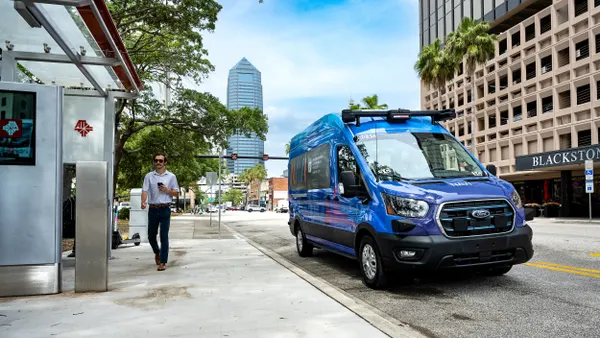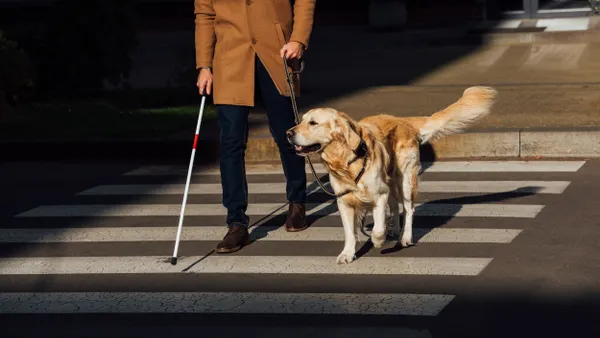Editor's Note: The following is a guest post from Jon Sadow, co-founder and chief product officer of Scoop.
I grew up in Atlanta, commuting to and from school every day with my brother. Our drive was anywhere from 30 minutes to over an hour, and arranging carpools with classmates required lengthy phone chains to organize.
This experience is not unique to my brother and me, though. Every day, Americans travel for an average of 16 miles and 26 minutes each way to work, a commute that creates undue stress on individuals and their families.
Developing a solution to the growing problem of commuting has been the focus of my work and passion for the past five years. My experience starting a family has also illuminated many of the challenges everyday Americans face: errands, daycare, preschool and two working parents with one car have shown me how few mobility solutions exist for our day-to-day lives.
Most mobility innovation is focused on the wrong areas
Existing technology solutions do not address issues faced by most Americans. Many of these approaches don’t take into account the distances that people living in the suburbs travel each day to and from work, or even the specific demographics and behavioral patterns of people who don’t live in cities.
Mobility-related innovation seems to cater specifically to city dwellers, who tend to be young and have disposable income. The solutions we’ve seen to date are short-distance options, such as shared bikes, scooters, ride-sharing, and even today’s autonomous vehicles. These modes of transportation are becoming more popular, but they’re not equipped to address the needs of Americans who don’t meet the demographic profile of younger city denizens.
Tech needs to solve the problem, not just explore the technology
Whenever someone asks me for a prognostication about autonomous vehicles, I ask this question: How do you send an autonomous vehicle to pick up groceries or drop a child off at school? The typical reaction is a shrug and "good question."
To me, this simple question illustrates how the majority of mobility technology solutions are in search of a problem rather than a solution aimed at a real and meaningful problem. Too many companies are asking themselves, "how?" when they should really be asking, "why?"
Entrepreneurs, automotive, and transportation companies need a different approach to solving mobility challenges. Leaders at these organizations should consider the following tactics:
Learn from the actual people who are facing these issues. Capturing the true mobility-related pain points that the average American experiences will go a long way toward developing solutions that address actual problems. If mobility-solutions providers examined drivers’ pain points, they may have learned things, like lengthy commutes are probably the best place to focus innovations, many existing solutions don’t help large groups of Americans, or that people simply aren’t ready to abandon their vehicles for unmanned cars.
Research highlights some of these current pain points:
-
The commute causes people to leave their jobs, it negatively impacts health and it makes people less productive.
-
Last-mile solutions like bikes, scooters, and ride-hailing don’t address the requirements of the majority of Americans who live in the suburbs, have long commutes and who also require mobility options for other daily activities.
-
A 2018 study from Gallup found that three-quarters of Americans would still use a human-operated vehicle even if autonomous cars were common. This sentiment stems from the enjoyment people derive from driving their own cars, as “more than three in four (78%) [respondents] say they personally enjoy driving 'a great deal' or 'a moderate amount.'"
Amid the many discussions of the future of mobility, we have yet to see approaches to these challenges that will work for the average American – perhaps because we haven’t been asking the average American what they actually need from a mobility perspective.
Think about actual patterns of movement and how specific mobility solutions could improve them. Between 2016 and 2017, Americans made an average of 2.2 daily driving trips and spend an average of 51 daily minutes in cars, both increases from the 2014-15 survey findings. And, while scooter and shared bicycle usage doubled from 2017 to 2018, those trips occurred mainly during the week and exclusively in major metropolitan areas.
These numbers reiterate the idea that mobility solutions are focused on a small subset of people with specific transportation patterns, and that current approaches aren’t addressing the needs of people who drive regularly.
Consider solutions that address the needs of low-income communities and push local governments to establish mobility-focused grants and services. We’ve already seen how many modern mobility solutions mostly benefit younger, wealthier people who live in cities. The people who are most likely to be able to purchase a solution like an autonomous vehicle are less likely to require affordable mobility options. It seems approaches to alternative transportation have ignored the populations that most need access to affordable and flexible transportation in order to gain better access to areas of economic opportunity.
The future of mobility must be more inclusive
New mobility solutions such as shared scooters don’t address the way most people have commuted for decade. We need to design mobility that focuses on inclusion and problems that actually exist for a majority of people.
So how do founders and innovators avoid making the same mistakes by falling into the same traps that exist today? Companies can start by building diverse teams who think about problems in a diverse way. Hopefully, this approach leads to solutions for the people who need them most.










